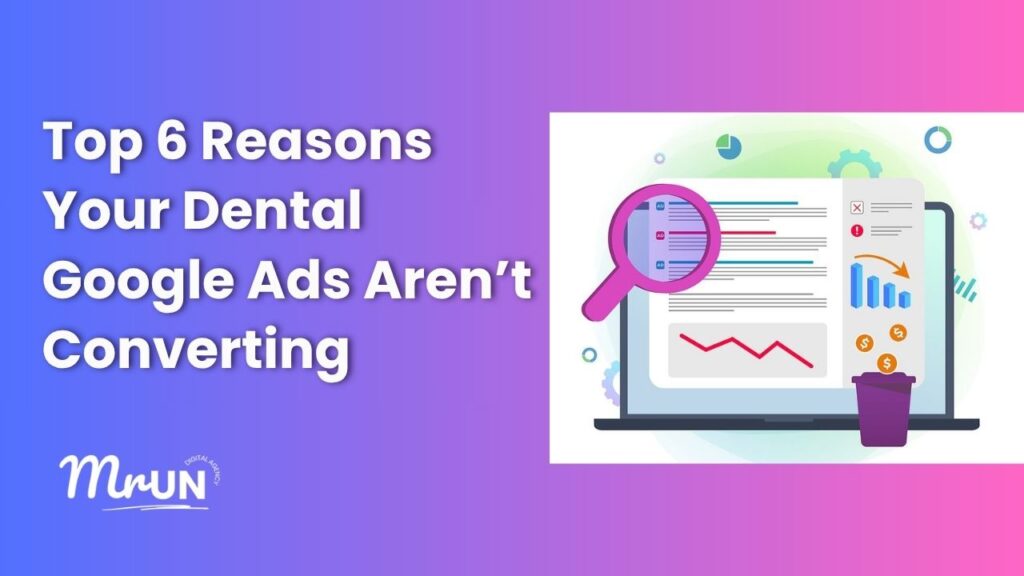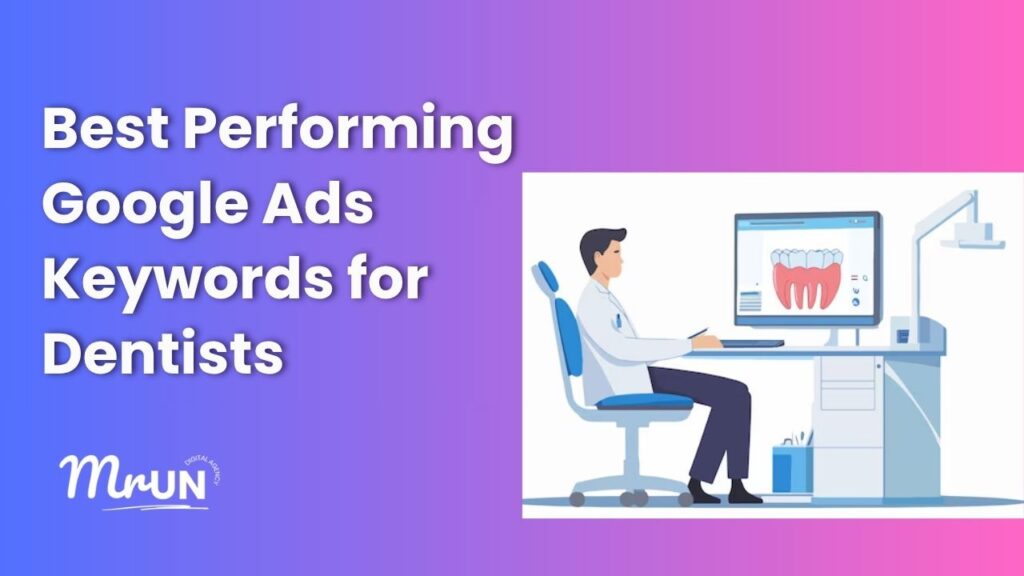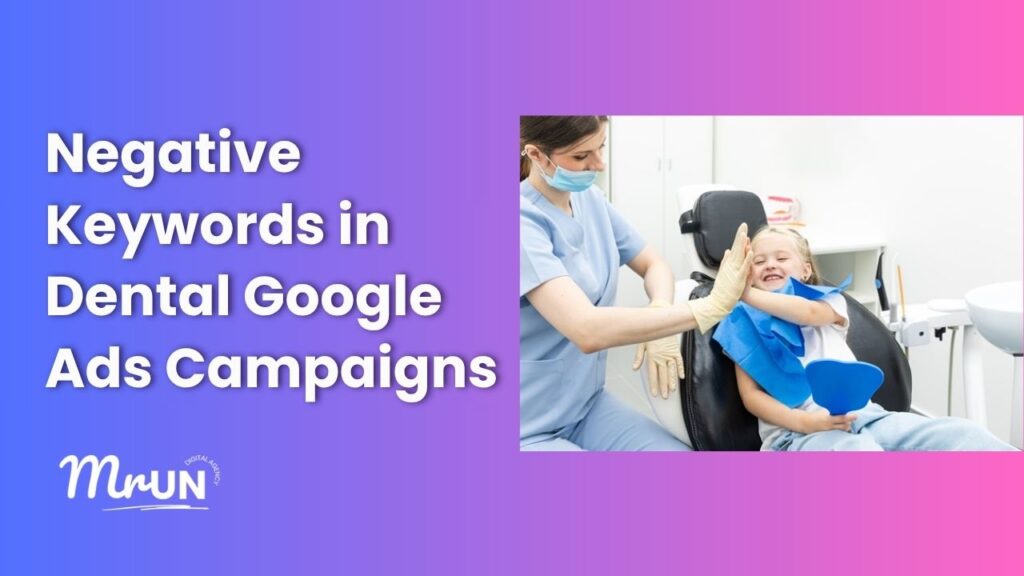Top 6 Reasons Your Dental Google Ads Aren’t Converting
Running Google Ads for your dental practice but not seeing results? You’re not alone. Many dentists invest heavily in ads but get few leads or bookings in return. The truth is, even well-funded campaigns can fail if not set up correctly. Whether you’re new to Google Ads or have been running campaigns for years, this guide will help you uncover the top 6 reasons your dental Google Ads aren’t converting—and how to fix them. 1. Poor Keyword Targeting If your ads are showing up for the wrong searches, you’re wasting money on unqualified traffic. Common Mistakes: Fix It: 2. No Location Targeting or Overly Broad Targeting If you’re a local dental clinic, showing ads outside your service area kills conversions and drains your budget. Common Mistakes: Fix It: 3. Weak or Irrelevant Landing Pages Even if your ad is perfect, sending people to a generic or slow-loading website kills conversions. Common Mistakes: Fix It: 4. Lack of Ad Extensions Ad extensions enhance your visibility and encourage more clicks—but many practices ignore them. Common Mistakes: Fix It: 5. Not Tracking Conversions Properly You can’t fix what you don’t measure. Many dental offices run ads but don’t know which ones generate calls or bookings. Common Mistakes: Fix It: 6. Not Using Compelling Offers or CTAs Why should someone pick your clinic over others? If your ads don’t answer that, users scroll past. Common Mistakes: Fix It: Conclusion If your dental Google Ads aren’t converting, it’s likely due to one (or more) of these six issues. The good news? Each one is fixable. With the right strategy, targeting, and landing experience, you can turn your ad spend into actual patient bookings. Need Expert Help? We specialize in high-converting Google Ads campaigns for dental practices. Let us audit your current campaigns for free and help you optimize for more patients and better ROI. Google Ads Calculator for Dentists.
Top 6 Reasons Your Dental Google Ads Aren’t Converting Read More »





